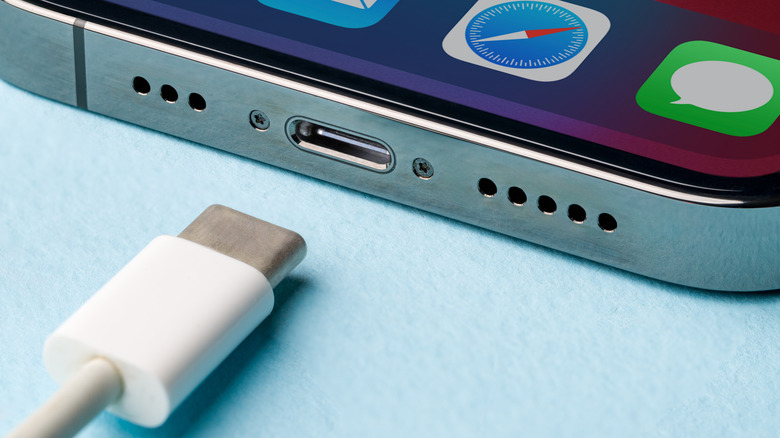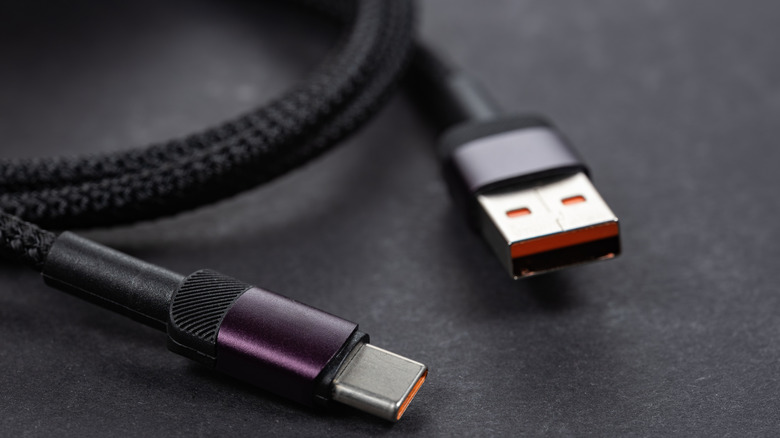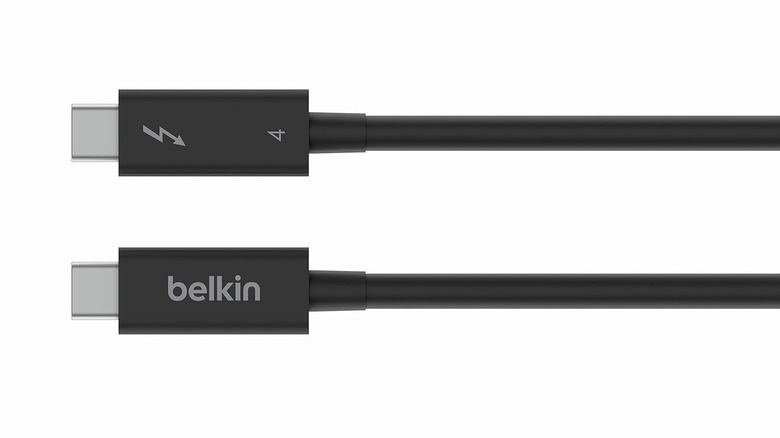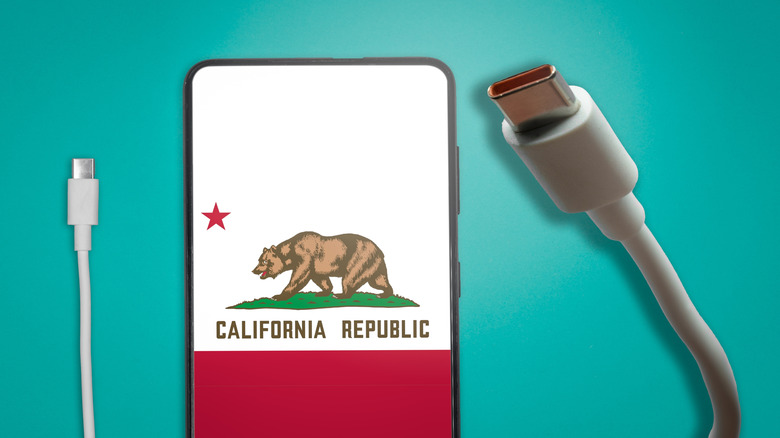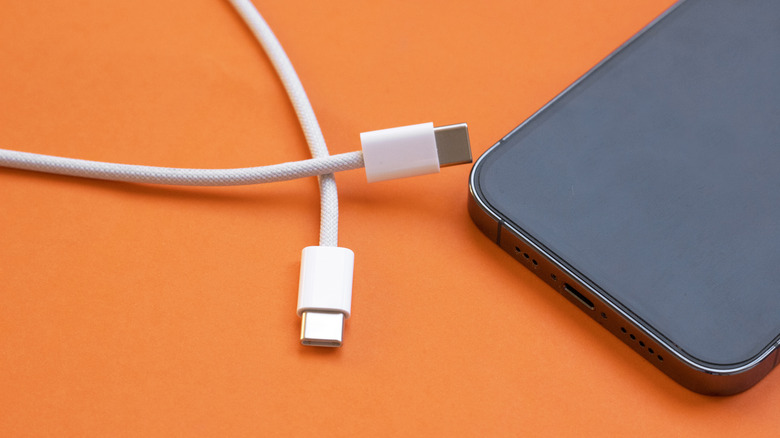What Is USB Type C, And What Can It Do?
We may receive a commission on purchases made from links.
To younger computer users, this may come as a shock, but connectivity used to be a lot more complicated. Before USB (short for Universal Serial Bus) took hold as the common standard for connecting peripherals to a computer, there were all sorts of different types of cables and connections to keep track of. Serial ports gave way to the more robust parallel ports, which were most commonly used for printers and scanners but also external storage devices. There was also the standard game port, which was the common standard for joysticks and gamepads but also doubled as the MIDI port for connecting digital musical instruments to your computers. On top of that, there was SCSI (pronounced "scuzzy") for external hard drives, and PS/2 for keyboards and mice, which can still be found on some motherboards. It was a lot to keep track of.
USB and its many revisions helped simplify all of that, and its power delivery elements have also made it an increasingly common charging standard, even on non-computing devices. This has become even more pronounced since the USB-C specification was first published in 2014, and it now dominates the computing landscape for USB devices. With a small, reversible connector, high power output, high data transfer speeds, smarter power delivery technology, and "Alternate Modes" allowing video output over common standards like HDMI and DisplayPort, it's become the USB implementation to beat. Let's take a detailed look at exactly what makes USB Type-C special.
What differentiates USB Type-C from other USB implementations?
Until relatively recently, USB Type-A was the dominant form of USB connector, the one that plugged into a computer or power brick, with alternate connectors like Micro USB, Mini USB, and USB Type-B on the other end to connect it to a peripheral or a portable device's charging port. USB Type-C, though, with its versatility and numerous improvements alongside the advancement of the USB standard more broadly, is increasingly becoming the default connector on both ends of the cable.
Before USB Type-C, the USB standard dictated that USB devices be either the "host" or a "peripheral" device, with different connectors for each preferred to avoid connecting two hosts. That's why Type-A to Type-A or Micro USB to Micro USB weren't as common as Type-C to Type-C is now. Type-C can terminate both ends of a cable because the technology is smart enough to figure out which device is "host" and which is "peripheral." Finally, after decades of USB, there's one connector to rule them all.
USB Type-C's power delivery capabilities also make it stand out over past USB implementations. While USB Type-A had long topped out at 15 watts, USB Type-C's spec includes the USB Power Delivery standard, which supported 100 watt charging and was later amended to supporting 240 watts. That's why USB has become a much more attractive option for all varieties of chargers and power adapters now, even making laptop chargers the most standardized that they've ever been.
How does Thunderbolt fit into this?
The USB Type-C connector isn't just used for the USB standard. Intel's Thunderbolt has used the same connector since Thunderbolt 3. Thunderbolt does everything USB Type-C can do and more. Comparing the most recent revisions of each, USB 4.0 and Thunderbolt 5, Thunderbolt is capable of up to three times the maximum data transfer speed (80Gbps to 120Gbps as opposed to 40Gbps). These greater speeds allow Thunderbolt to support PCI Express at full speed, something that's optional in USB 4.0. And if you want full Thunderbolt speeds, you're best off getting a Thunderbolt-certified cable.
In practice, this allows Thunderbolt to extend its functionality beyond what we expect of USB. External storage like PCI Express-based SSDs can operate to their full potential, while other hardware like external GPUs also become an option.This is particularly great for laptop users, especially since expansion cards for notebook computers largely died out with the end of ExpressCard and the disbanding of the PCMCIA Association that governed the mobile expansion card standards.
In a September 2023 PC Gamer interview, Jason Ziller, who runs Intel's Client Connectivity Division, was bullish on Thunderbolt 5 causing a new boom period for external GPUs. "I think that with the new version doubling bandwidth we will see a resurgence of that category," said Ziller.
The EU, India, and California helped make Type-C a requirement
In April 2022, the European Union's Parliament voted on something that would change the tech industry worldwide. The law, known as the Common Charger Directive, mandated that, by the end of 2024, all mobile phones, tablets, and cameras sold in the European Union have a USB Type-C charging port.
California made a similar move next in April 2023, with AB1659 mandating that "Small Electronic Devices" such as mobile phones, tablet, digital cameras, headphones, headsets, handheld video game consoles, portable speakers, e-readers, keyboards, mice,GPS systems, earbuds, laptops, "or other similar device that is used for audio, video, or text communication or any other type of portable computer or computer-like instrument that is capable of being charged" use USB Type-C as well. India followed in July 2023 when its Bureau of Indian Standards mandated all mobile devices use USB Type-C by June 2025. With these three massive markets all mandating USB Type-C for mobile devices, the consumer electronics industry had to fall in line.
Apple, with its love of proprietary connectors, was arguably the company most visibly affected by the changes. The iPhone switched from the Lightning connector to USB Type-C with 2023's iPhone 15 line, and the rest was history. As these changes take hold, proprietary cables will increasing become a relic of the past, a historical nuisance eliminated long after it should have been.
Not all USB Type-C cables are created equal
With the USB Power Delivery standard now capable of delivering 240 watts, USB Type-C becomes an increasingly attractive charging port option for all sorts of different electronic devices over the traditional DC power connectors that had previosly dominated. More and more devices with no real connection to the computing world support USB Type-C chargers, like Homedics cordless massage pillows. As a result of this, there's now more of a role for charging-only USB Type-C cables. With a simplified design and fewer pins than a standard cable, these cost less to make, but since the data element is required for a charger to participate in the USB power "negotiation" step that helps customize and regulate power delivery, power-only cables will deliver only 5 Volts and 1 Amp. This makes them less than ideal.
To make sure that you're getting a high-quality USB cable, you're best off getting cables that have explicitly been certified by USB-IF, the standards body overseeing the USB spec. "The USB-IF cable certification program aims to provide USB end users with a list of cables that meet quality standards necessary to operate in a USB environment," reads USB-IF's website. "All cables do not have the same capabilities. The USB-IF certifies cables for different purposes." If you want to make sure your cable will work perfectly, you want one that's USB-IF certified for your specific use case. Certified cables aren't much more expensive than off-brand cables, and it's better to be safe.
